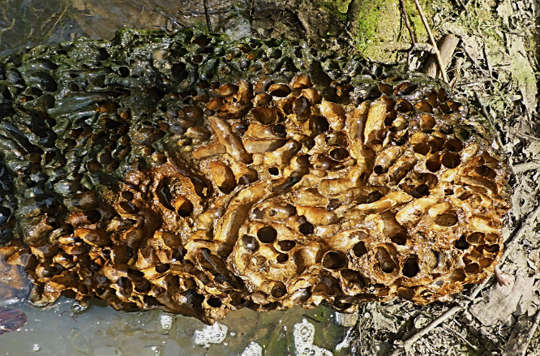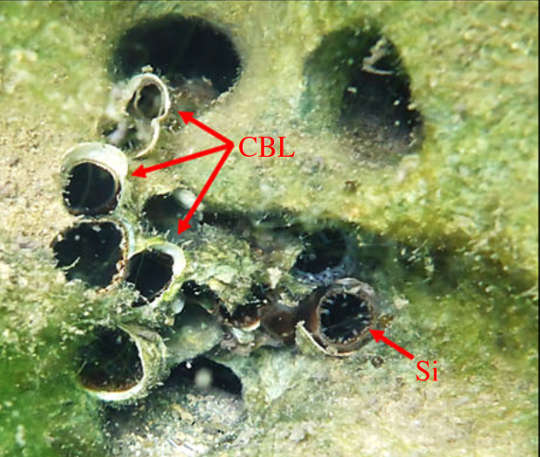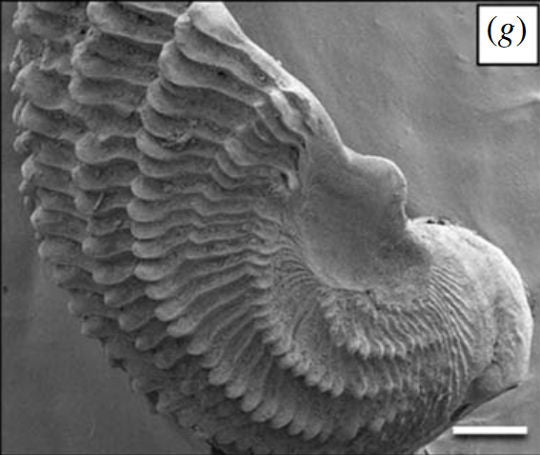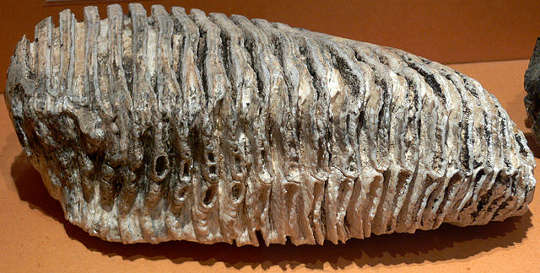This article was published in Scientific American’s former blog network and reflects the views of the author, not necessarily those of Scientific American
Inside armored tunnels in the bedrock of a river in the Philippines, there lives a humble shipworm whose gut is filled with stone. And everywhere the shipworm drills, the rock is sure to go.

Limestone riddled with empty burrows of L. abatanica. Credit: Shipway et al. 2019
The implication seems clear.
On supporting science journalism
If you're enjoying this article, consider supporting our award-winning journalism by subscribing. By purchasing a subscription you are helping to ensure the future of impactful stories about the discoveries and ideas shaping our world today.
The worms work for Elon Musk.
Well, that and these newly described animals – formally dubbed Lithoredo abatanica -- are now the only animals we know of that can eat the bones of the Earth itself.
Eat, yes. Feed? Less clear.
Shipworms are a group of bivalve mollusks (like clams and oysters) that decided being shellfish was lame and took up tubeworming instead. They converted their bivalves from body-enclosing shells into jaws for gnawing wood. To replace the valves’ protective function, the worm secretes a hard calcareous tube around itself tipped by a retractable two-doored tailgate of the same material.

Siphons (Si) of living shipworms protrude from their calcareous burrow linings(CBL). Credit: Shipway et al. 2019
As a group, shipworms are notorious devourers of wooden ships, docks, and piers. They don’t just excavate wood, like carpenter ants. They eat it like termites. The bill for their take-out runs into the billions each year.
Until now, every known shipworm required wood for at least part of its life cycle. But the newest worm on the block -- whose DNA confirms its shipworm ancestry -- seems to have tossed that shipworm rule and a bunch of others right out the window.
Many clues suggest this, according to the paper in the Proceedings of the Royal Society B in which a team of scientists working in the United States and the Philippines announce the discovery in June.
Its shell valves lack the fine teeth commonly found in wood-boring shipworms. Instead, they have broad spatulate denticles that look a bit like the surface of wooly mammoth molar.

Scanning electron micrograph of shell valve of L. abatanica. Credit: Shipway et al. 2019

Mammoth molar. Credit: Remi Mathis, Wikimedia (CC-by-3.0)
Two different X-ray analyses of their gut contents show a collection of unusual elements in similar proportions to the calcite rock in which they tunnel: oxygen, silicon, aluminum, calcium, magnesium, and iron. Their "poop" is, rather suspiciously, sand.
Moreover, the scientists examined waterlogged wood near the shipworm burrows and found no evidence of L. abatanica, though they did find another species of shipworm. They did, however, find tiny worms of L. abatanica less than 5 millimeters long already burrowing in stone.
The worm lacks a caecum, the baggy extension to the digestive track in which most shipworms store and digest their wood food.
Finally, its gills are suspiciously full of bacteria.
A rock-eating animal is an oddity indeed. But no one knows if the worm actually receives nutrition from stone, or if the rock serves some other purpose – or none at all.
Lithophagy is perhaps, the authors suggest, a byproduct of the mode in which all shipworms operate: bore, chomp, and swallow. Because all known shipworms bore by eating (or eat by boring, depending on how you look at it), if a shipworm was to invade rock, it would have to do that, too. In that way, this new shipworm (rockworm?) is very much still following the shipworm rules.
But does the worm derive any benefit from its gravel diet, or is it strictly a conduit for mine tailings? Do the stone particles function like the gizzard stones of chickens and other birds?
One clue is that the gut contents of the worm were much darker than the rock they were ingesting. The scientists speculate that they may also feed on pigmented algae suspended in the water or growing on or within the rock.
It’s also possible that the worms are partially or wholly symbiotic with the bacteria ensconced in their gills, and that in exchange for rent-controlled housing, the bacteria pony up vittles.
To sum up: we really don't know.
What we do know is that these worms are found in only one place in the world: a two-kilometer stretch of the Abatan River on Bohol Island in the Philippines. Their diet/real estate market is confined, potentially, to the particular rock formation in which they bore. Let’s hope some caring humans find a way to protect those extremely interesting and unusual two kilometers.
Reference
Shipway, J. Reuben, Marvin A. Altamia, Gary Rosenberg, Gisela P. Concepcion, Margo G. Haygood, and Daniel L. Distel. "A rock-boring and rock-ingesting freshwater bivalve (shipworm) from the Philippines." Proceedings of the Royal Society B 286, no. 1905 (2019): 20190434.